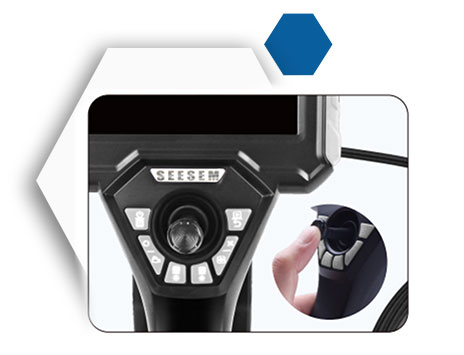산업용 비디오스코프s play a vital role in various industries, providing visual inspection capabilities in areas that are difficult to access. These instruments consist of several components, each made from specific materials that ensure durability, 유연성, and optical clarity. 이 기사에서는, we will explore the materials commonly used in the construction of industrial videoscopes.
Probe Shaft:
The probe shaft is a crucial part of a videoscope, responsible for carrying the optical system and articulation mechanism. It needs to be flexible yet robust to withstand the demands of industrial environments. Typically, probe shafts are constructed using materials such as stainless steel braided cables, tungsten alloys, or polyurethane. Stainless steel provides strength and resistance to corrosion, while tungsten alloys offer enhanced durability and flexibility. Polyurethane is lightweight and provides excellent resistance to impact and chemicals.
Optical Fibers:
The optical fibers transmit light from the light source to the distal end of the videoscope, enabling clear visualization of the inspection area. These fibers are often made from high-quality glass or silica. Glass fibers offer good optical performance and are resistant to high temperatures, making them suitable for various industrial applications. Silica fibers are more flexible, making them ideal for videoscopes requiring intricate articulation.
Light Guide:
The light guide is responsible for directing light from the light source to the optical fibers. It needs to be highly efficient in transmitting light while maintaining flexibility. Commonly, plastic or glass fibers are used as light guides. Plastic fibers are cost-effective, flexible, and resistant to breakage. Glass fibers, on the other hand, offer superior light transmission and are more durable.
Articulation Mechanism:
The articulation mechanism allows the videoscope to navigate through complex spaces. The materials used for articulation mechanisms are typically stainless steel, titanium, or high-strength alloys. These materials offer excellent strength, 유연성, and resistance to corrosion, ensuring smooth and precise movement of the videoscope tip.
Outer Casing:
The outer casing of a videoscope serves as a protective shell, shielding the internal components from external elements. Common materials for the outer casing include reinforced plastic, aluminum alloys, or stainless steel. Reinforced plastic provides a lightweight and impact-resistant option, while aluminum alloys offer a balance between weight and durability. Stainless steel casings provide exceptional durability and resistance to harsh environments.
결론:
Industrial videoscopes are complex instruments that rely on a combination of materials to meet the demands of rigorous inspections. The probe shaft, optical fibers, light guide, articulation mechanism, and outer casing all play essential roles in ensuring the durability, 유연성, and optical performance of the videoscope. By utilizing appropriate materials in each component, manufacturers can create videoscopes that are capable of withstanding harsh industrial environments while providing clear and reliable visual inspection capabilities.


